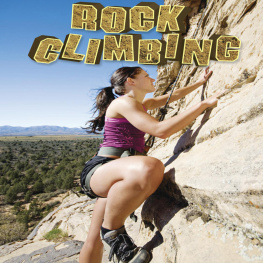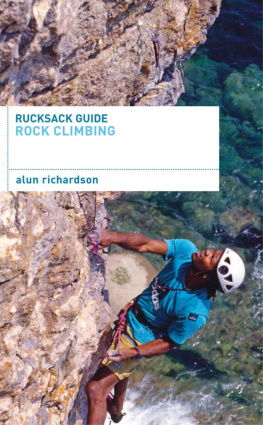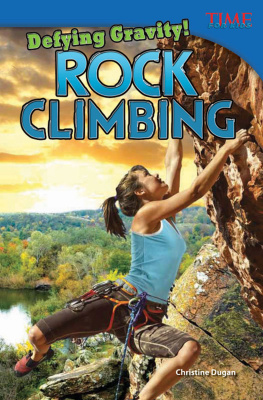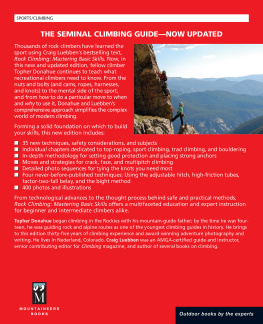Nate Fitch - Climbing: From Rock to Ice
Here you can read online Nate Fitch - Climbing: From Rock to Ice full text of the book (entire story) in english for free. Download pdf and epub, get meaning, cover and reviews about this ebook. year: 2019, publisher: Falcon Guides, genre: Romance novel. Description of the work, (preface) as well as reviews are available. Best literature library LitArk.com created for fans of good reading and offers a wide selection of genres:
Romance novel
Science fiction
Adventure
Detective
Science
History
Home and family
Prose
Art
Politics
Computer
Non-fiction
Religion
Business
Children
Humor
Choose a favorite category and find really read worthwhile books. Enjoy immersion in the world of imagination, feel the emotions of the characters or learn something new for yourself, make an fascinating discovery.

- Book:Climbing: From Rock to Ice
- Author:
- Publisher:Falcon Guides
- Genre:
- Year:2019
- Rating:4 / 5
- Favourites:Add to favourites
- Your mark:
- 80
- 1
- 2
- 3
- 4
- 5
Climbing: From Rock to Ice: summary, description and annotation
We offer to read an annotation, description, summary or preface (depends on what the author of the book "Climbing: From Rock to Ice" wrote himself). If you haven't found the necessary information about the book — write in the comments, we will try to find it.
Climbing: From Rock to Ice — read online for free the complete book (whole text) full work
Below is the text of the book, divided by pages. System saving the place of the last page read, allows you to conveniently read the book "Climbing: From Rock to Ice" online for free, without having to search again every time where you left off. Put a bookmark, and you can go to the page where you finished reading at any time.
Font size:
Interval:
Bookmark:
Ron Funderburke is an AMGA-certified guide. He is the AMGA SPI discipline coordinator, the education manager at the American Alpine Club, and a senior climbing specialist with the North Carolina Outward Bound School. Ron lives in Golden, Colorado, with his wife and sons.
Climbing: From First-Timer to Gym Climber
Climbing: From Gym to Rock
Climbing: From Toproping to Sport
Climbing: From Sport to Traditional Climbing
Climbing: From Single Pitch to Multipitch

FALCON GUIDES
An imprint of The Rowman & Littlefield Publishing Group, Inc.
4501 Forbes Blvd., Ste. 200
Lanham, MD 20706
www.rowman.com
Falcon and FalconGuides are registered trademarks and Make Adventure Your Story is a trademark of The Rowman & Littlefield Publishing Group, Inc.
Distributed by NATIONAL BOOK NETWORK
Copyright 2019 The Rowman & Littlefield Publishing Group, Inc.
Photos by Ron Funderburke, except where noted.
All rights reserved. No part of this book may be reproduced in any form or by any electronic or mechanical means, including information storage and retrieval systems, without written permission from the publisher, except by a reviewer who may quote passages in a review.
British Library Cataloguing in Publication Information available
Library of Congress Cataloging-in-Publication Data available
ISBN 978-1-4930-2762-0 (paperback)
ISBN 978-1-4930-2763-7 (e-book)
 The paper used in this publication meets the minimum requirements of American National Standard for Information Sciences Permanence of Paper for Printed Library Materials, ANSI/NISO Z39.48-1992.
The paper used in this publication meets the minimum requirements of American National Standard for Information Sciences Permanence of Paper for Printed Library Materials, ANSI/NISO Z39.48-1992.
Warning: Climbing is a dangerous sport. You can be seriously injured or die. Read the following before you use this book.
This is an instruction book about rock climbing, a sport that is inherently dangerous. Do not depend solely on information from this book for your personal safety. Your climbing safety depends on your own judgment based on competent instruction, experience, and a realistic assessment of your climbing ability.
The training advice given in this book is based on the authors opinions. Consult your physician before engaging in any part of the training program described by the author.
There are no warranties, either expressed or implied, that this instruction book contains accurate and reliable information. There are no warranties as to fitness for a particular purpose or that this book is merchantable. Your use of this book indicates your assumption of the risk of death or serious injury as a result of climbings risks and is an acknowledgment of your own sole responsibility for your safety in climbing or in training for climbing.
The Rowman & Littlefield Publishing Group, Inc., and the authors assume no liability for accidents happening to, or injuries sustained by, readers who engage in the activities described in this book.
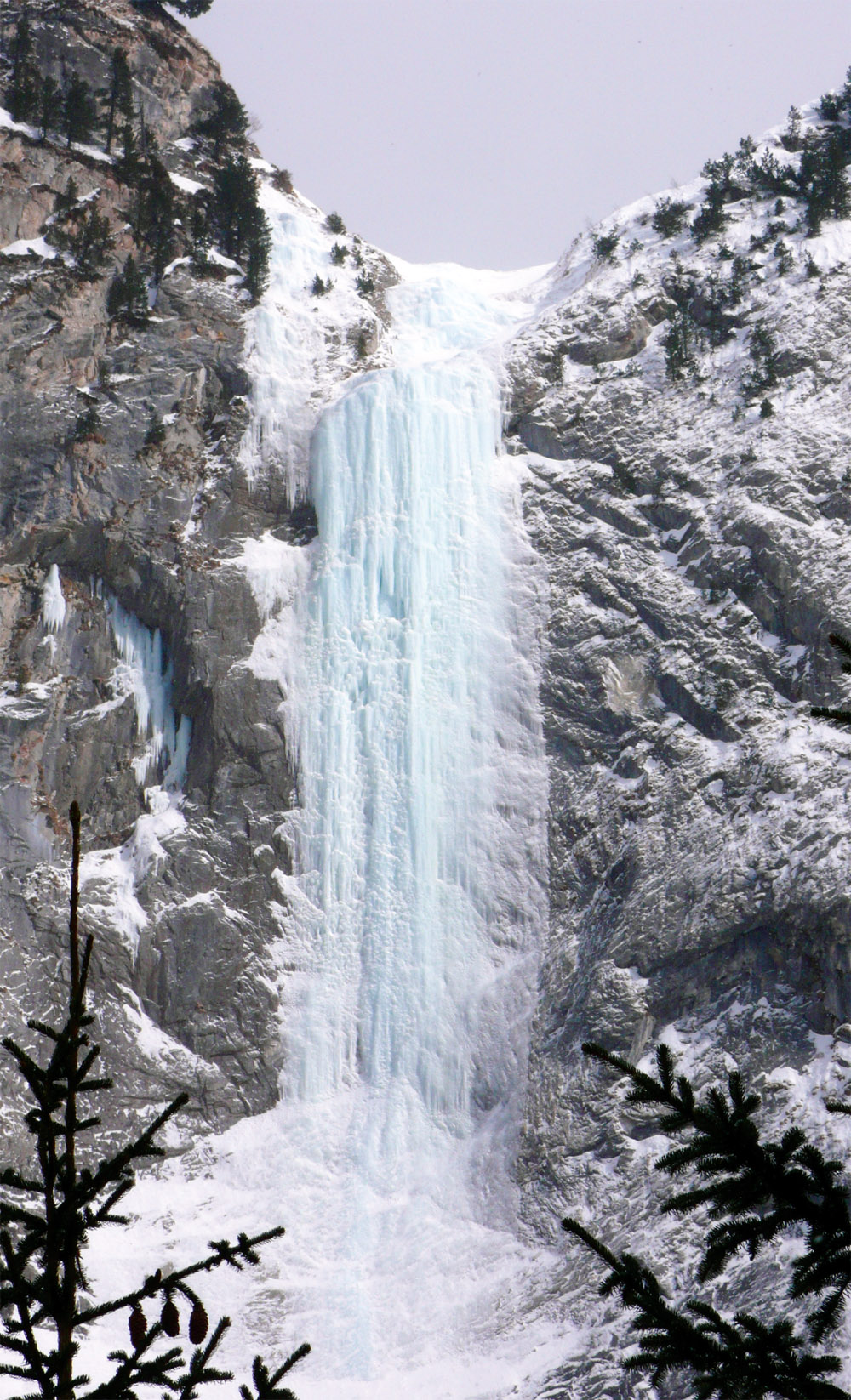
Multipitch ice climbing is a great adventure, but it helps to learn to move well on ice first.
S ome seasoned rock climbers might enjoy endless summers, halcyon days, and they may never worry about the cold dark days of winter. For some, there is simply no such thing as winter. They winter in Joshua Tree, summer at higher elevations, and fill their springs and falls with road trips to sunny crags, boulders, and big walls.
Some seasoned rock climbers might gracefully dance up sunny slabs and faces, flowing through moves on sure-footed smears and crisp edges. They find harmony and balance in every inch of movement, leaving no more trace than a falling feather. Even on those days when they struggle and grunt for every millimeter of an off width, they know that the rock cannot change its essential character, unlike the mutable climber that labors beneath it.
This book is not for those rock climbers.
They wont appreciate what we have in store for them. This book is for the rock climber who mournfully watches the first snows of winter blanket her crags, the ice sealing off her finger crack projects; they wonder how they will survive a winter without climbing something beautiful, something incomparable, something inspiring.
This book is for the climber that wants to turn the tables on the climbing medium for once. For the climber that wants to climb something impermanent, to carve and sculpt the climbing surface, to pretend for one small second that the climber is both the unmovable object and the unstoppable force.
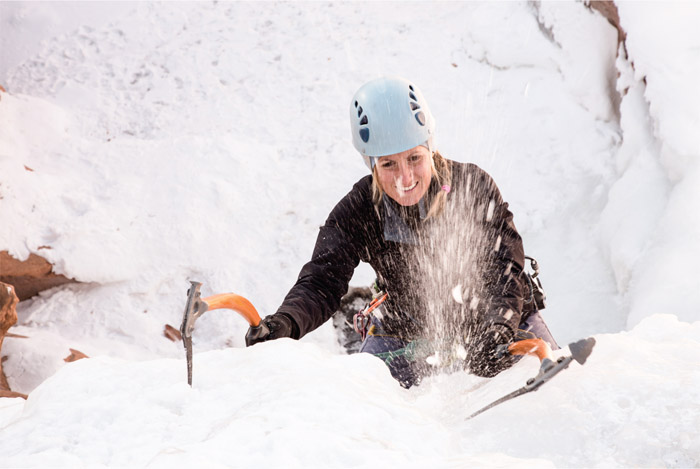
There is always finesse in ice climbing, but there is also unapologetic destruction.
This book is for the climber that wants to be more than a floating feather, a climber that yearns for some noise, some percussion, some action to disrupt, to disturb, to destroy the climb as she climbs it. Ice climbing is all those things, and for all the things it has in common with rock climbing, it is most definitely not rock climbing.
Ice climbing takes everything thats enjoyable about rock climbing and extends the argument. If you love toys and tools, ice climbing has all the same toys and tools as rock climbing, but adds countless new gadgets and trinkets. If you love the aesthetic quality of rock faces, then ice climbs adorn those places in ways that you will want to experience more intimately. If you love soaring and sailing movement, ice climbing offers sweeping gestures of the limbs, scaling terrain in spans only limited by the length of an ice ax on the tips of your fingers. If nothing else, ice climbing gives you something novel to do in the winter.
In the chapters to follow, well equip an experienced rock climber with the tools and techniques to begin their ice climbing career. It doesnt really matter why a climber chooses to ice climb, or what purpose ice climbing serves in their climbing; the stipulation of this book is that rock climbing is a natural precursor to ice climbing. As many climbers will attest, ice climbing is entirely avoidable for rock climbers, but we dont know of many circumstances where rock climbing is entirely avoidable for ice climbers or alpinists. This central idea grounds the work we hope to do in this book. If your hearts desire is ice climbing, learn to rock climb. Read the other books in our series, work with a climbing instructor or guide, lay a foundation for your ice climbing before continuing with the rest of this book.
I n this book, were going to stick to the kinds of ice climbing experiences and locations that make effective transitions from rock climbing to ice climbing. Ice climbing can take adventurous climbers to some remote, frigid, and outlandish placesbut those are not the best places to learn to ice climb. When a climber first begins to transition from rock to ice, single-pitch ice crags offer the best environments for learning. In time, when one has learned to climb ice efficiently, to lead and share leads, remote multipitch ice climbs, or alpine climbs will surely beckon. For now, we need more of a classroom setting.
In this chapter, were going to devote some time to defining single-pitch ice cragging. Were not going to discuss multipitch ice. Were not going to explore ice climbs that draw the climbing team into alpine terrain, or terrain with long approaches, glaciers, or exposure to avalanche conditions. Were also going to stay away from too much mixed climbing or dry-tooling. Mixed climbing and drytooling are remarkable climbing activities, but they are so unlike ice climbing, we would need quite a bit more time and text to dive into a proper explanation of the discipline. In this book, when crampons or ice tools touch the rock, it will only be incidental to an ice climb. We will not focus on extensive rock work.
Font size:
Interval:
Bookmark:
Similar books «Climbing: From Rock to Ice»
Look at similar books to Climbing: From Rock to Ice. We have selected literature similar in name and meaning in the hope of providing readers with more options to find new, interesting, not yet read works.
Discussion, reviews of the book Climbing: From Rock to Ice and just readers' own opinions. Leave your comments, write what you think about the work, its meaning or the main characters. Specify what exactly you liked and what you didn't like, and why you think so.

